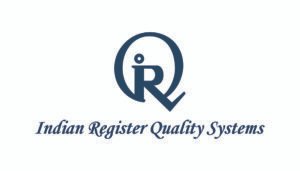Category: FSSC 22000 Certification

Ensuring Food Safety: FSSC 22000 Version 6 Compliance and Certification in India
The FSSC 22000 certification program is a Food Safety System that supplies a comprehensive framework for the production chain of a food product. The certification framework is an effective solution to manage and promote the food safety responsibilities in an organization. The food safety program is a globally accepted framework, and it is acknowledged by the Global Food Safety Initiative (GFSI). FSSC is based on the existing ISO Standards, and thus, the utility of the framework is unquestionable. FSSC 22000 has gained popularity in a short span. In fact, more and more retailers and manufacturers are pushing their limits to adhere to the norms. The certification has an integral role in preventing the possibility of recalling the products. There are 7600 facilities certified across the world, and FSSC 22000 is among the fastest-growing certification schemes. The FSSC 22000 system employs a management system and defines the ideal approach to food safety. It is an effective choice and uses the ISO 22000 framework for optimal management system requirements and ISO Technical Standard maintenance. The food safety management system combines multiple management systems, such as ISO 9001 and ISO 14001, delivering a comprehensive solution. FSSC 22000 Certification – Understanding it rightly. A standardized system ensuring the nobility and safety of the various links in a food chain is vital to maintaining quality. The FSSC standard has become critical to ensure optimal consumer protection. There are diverse benefits of the certification, making it a prime choice among manufacturers and consumers. The International Organization for Standardization, or ISO, has developed a Food Safety Management System. It is based on the Quality Management System – ISO 9001, a globally accepted standard. The Food Safety Management System is applicable to any company or enterprise in the food industry. It is suitable for farmers, manufacturers, and transporters. Importance of FSSC 22000 Certification FSSC 22000 is an all-inclusive Food Safety Management System. It combines with different ISO-based management systems like – ISO 9001, ISO 14000, etc. Read on and explore the significance of the updated certification program. 1. Managing Risk If you adhere to the norms of the FSSC System, it will give your company a competent management strategy for food safety hazards. It helps an organization by building a comprehensive environment with optimal capacity for producing a safe product. The management system is convenient and fuss-free to manage, monitor, and validate. Also, it streamlines system improvement. 2. Maintain current customers Recent research states that approximately twenty-five percent of certified companies are asking their suppliers to acquire the certification. It is high time you consider the system. Acquiring the certification is essential for the organization. It helps you operate optimally and get better clients alongside the existing customers. 3. Increase your market reach The top retailers and multinational manufacturers look for the certification of their suppliers. If you have an FSSC 22000 Certification, it expands your market reach to the next level. With the certification, you become ready to expand the market reach. 4. Prepare for upcoming regulatory changes Different countries across the world are modifying their food safety system. It is vital to abide by the new food safety regulations and update the existing system. FSSC facilitates the operations of the organization to meet the regulatory requirements. What are the reasons for the revision? According to the revised version of the FSSC standard, one must take care of the following aspects – Compliance deadline FSSC 22000 Version 6 was published on April 1, 2023. It had a one-year deadline for compliance. By March 31, 2024, all certification audits must follow the guidelines of version 5.1. The transition period is from April 1, 2024, to March 31, 2025. During this time, all organizations already certified must be audited in the new version 6. It is better to start early and implement the vital changes. It necessitates critical analysis and risk assessment to determine an effective structure. Updated norms in FSSC version 6 The different updated norms in FSSC version 6 include – Food Safety and Quality Culture, Equipment Management, Communication Requirements, Quality Control, and Food Loss and Waste. The new topics included in the existing set of requirements are – Supplier Management, Product Labelling, Logo Use, Management of Allergens, Food Defense, Food Fraud, Environmental Monitoring, Transportation and Delivery, Product Design and Development, Requirements for multi-site organization, and Hazard Control and steps to prevent cross-contamination. The unchanged aspects of the FSSC version are the verification of PPRs and Health Status. Benefits you must know Several consumers have become concerned about food safety, and awareness has increased to the next level. Unfortunately, the incidents of foodborne health hazards and product recalls in the supply chains have worsened the situation. Manufacturers need to focus and put extra effort into addressing the operational vulnerabilities in the processes. Explore the prime benefits of the food certification to make the best decision – Closing note – Make the best choice Meet the requirements of the latest version of FSSC. Get a golden chance to develop and implement food fraud prevention measures for enhanced operations. Review and recognize the vulnerabilities in your supply chain. Identify the aspects that could lead to food fraud incidents and implement the ideal controls to mitigate the risks. Make it a point to review and update your food fraud prevention strategy and stay ahead of the emerging threats.

Understanding FSSC 22000 Version 6: What’s New and What’s Changed?
FSSC 22000 is a globally recognized certification scheme. FSSC 2200 ensures the safety and quality of food-based products. The newest version of FSSC 22000 comprises the sixth version. It was published in April 2023. One can obtain a 12-month transition period between 1st April 2023 and 31st March 2024. The transition is vital to abide by. Why? Because after 31st March 2024, no audits could be conducted by following the 5.1. version of FSSC 22000 certification. The latest version of the certification exhibits significant changes and all these impact food production companies. Review the prime transition areas and ensure the best solution. Changes in the food chain category FSSC 22000 version 6 has introduced effective changes to food chain categories. The food chain subcategories were based on the ISO22003-1 accreditation program. The categories met the Global Food Safety Initiative (GFSI) requirements. But things have evolved. FSSC version 6 has introduced two categories – The pet food production categories have also been revised and eliminated. Pet food is part of the C and D categories. The latest addition of e-commerce could be seen in the category FI. Introducing detailed clauses – Know them rightly. The additional norms and requirements of FSSC version 6 include the following – Audit times – The change in accreditation The various changes in the accreditation document ISO 22003-1 make a remarkable impact. One can spot additional requirements related to the audit time for FSSC 22000. In fact, the audit time will increase for many organizations. In contrast, enterprises that undergo integrated audits with management systems or food safety systems can experience a reduction in audit time. Follow up on non-major conformities. FSSC 2200 version 6 defines the prime non-conformities, and these need to be enclosed by the certification body (CB) within a span of 28 calendar days. The days get counted from the last day of the audit. A Corrective Action Plan or CAP can also deliver temporary measures and ensure optimal monitoring solutions to mitigate the risks. The temporary changes are critical until permanent corrective action can be implemented. Additional audit documentation and certificates FSSC 22000 version 6 also necessitates the active role of a representative of the company and an experienced auditor to meet the needs. They help complete the attendance register. It is a critical document and contains information related to the start and end time of the audit with the break times. In addition, an integrity declaration is vital to manage by a senior representative of the company throughout the audit. Communication requirements – A new section It is a new section introduced in the 6th version of FSSC. The certification body must be informed within three days of an event that may impact food safety, legality, and the certification integrity. It can include force majeure, natural and human-made disasters like – war, crime, flood, earthquake, strike, terrorism, crime, flood, earthquake, malicious computer hacking, etc. Also, it includes critical situations where the certification integrity is at stake. FSSC is essential to prevent disrepute, recalls, withdrawals, disasters, and food safety outbreaks. The FSSC certification body needs to be informed within a span of three days. It is applicable to regulatory authorities and food safety issues. In many cases, there may be additional monitoring requirements, enforcing production shutdown. The FSSC norms are apt for food safety-related legal proceedings, trials, malpractices, and fraudulent activities. Equipment management – A new chapter Equipment specification and management are integral aspects. Companies need to follow FSSC compliance and regulatory norms for addressing hygienic design. The compliance norms help you navigate the hassles of legal and customer requirements. Ensure the best utility and functionality for equipment and ease the management steps conveniently. The supplier must offer accurate details and specifications before proceeding with the equipment installation. It helps avoid the risks, ensuring optimal quality. With the evolved management techniques, enjoy the benefits of adequate equipment control measures for production. Enhanced and updated norms for quality control Quality control exhibits a systematic procedure. It includes various aspects like the establishment, implementation, and maintenance of quality norms. The QMS also focuses on the finished product specifications and product release steps. Additionally, one can obtain an analytical overview of the quality control parameters that shall be carried out and used as input for the management review. The quality control procedure is included in internal audits, enhancing the overall attributes of the products. Quantity control techniques are dynamic and can vary based on legal and customer requirements. These are also included in the new chapter. Besides these, the establishing and implementing line start-up and change-over procedures have been added to the new chapter. It focuses on the dynamic controlling measures related to product labelling and packaging. Ensure better food safety and quality. Before the new changes in the certification framework, the focus was exclusively on food safety culture. It had to be implemented aptly and was part of FSSC 22000. The new version delivers a comprehensive solution by adding a new chapter with additional requirements. It covers everything essential for quality culture. It exhibits the commitment of an organization and helps cultivate optimal food safety and quality. The diverse aspects to consider in food safety and quality culture include – Ensure a well-documented food safety and quality culture plan with better-defined targets and deadlines for continuous improvement and optimal management. Summing up The main changes in the FSSC 22000 version 6 include – Ensure an efficient transition by realizing the new changes and critical aspects of the latest version of FSSC 22000. Image by Freepik

How Does FSSC 22000 V6 Compare To Other Food Safety Standards?
Food Safety System Certification 22000 is a notable scheme for those companies trying to maintain the maximum level of food safety management. It is critical to build and gain consumer trust and confidence. The version 6 of the globally-recognized FSSC scheme has been published by the authority. This current version exhibits multiple changes. It is designed to improve and enhance the scheme’s effectiveness. These changes are about to make an extensive impact on organizations in the food chain. Thus, one must stay up to about the FSSC 22000 V6 to understand how it would affect the business. Upgrade necessity – Know the need. Distinctive features of FSSC 22000 – What makes it unique? FSSC 22000 and ISO 22000 – Know the differences FSSC 22000 delivers a competent certification scheme with the vital features of ISO 22000 and an extensive list of standards for enterprises. The ISO 22000 certification framework contains lesser rigid requirements for the authority and enterprise, covering infrastructure and documentation maintenance. FSSC 22000 exhibits stricter requirements for infrastructure, covering the technical specifications of pre-industrial programs. The implementation of these requirements needs to be documented as part of the regulations of the framework. The requirements for the authority are vital for compliance, making the requirements of FSSC 22000 more rigid. It is necessary to develop and incorporate the critical procedures for ISO 22000 and FSSC 22000. There needs to be a thorough procedure for ensuring optimal management of documents, depending on the norms of production. The procedure of certification is similar for both schemes. However, the necessities of the FSSC 22000 scheme are more comprehensive and rigid, making it a labor-intensive process. Industries that can incorporate FSSC 22000 FSSC 22000 is suitable for various industries related to food and manufacturing. It includes – Prime benefits of FSSC 22000 – Positive impacts of the certification One can attain a systematic and competent strategy to identify and moderate food safety risks and hazards. The ISO-based certification model is apt for the food supply chain. FSSC 22000 is based on the ISO model. Thus, one can implement the framework with similar requirements. Read on and explore the benefits of FSSC 22000 and recognize the positive impacts of the certification – Industrial impacts with the new version – Experts must note Closing note – Audit impacts with the new version Due to changes in the accreditation document, the audit time for FSSC 22000 audits has been revised. The audit time has increased in many organizations. Many organizations need an integrated audit with enhanced management systems for food safety without reducing efficiency. Choose IRQS for an end-to-end solution related to FSSC audits and ease the professional requirements. Ensure an efficient audit session, meeting the revised norms of the FSSC 22000 audit. Image by Freepik

How To Choose The Right Food Safety Certification For Your Business?
Food Safety Certification authenticates the food business by implementing healthy practices ensuring optimal safety and quality. The environmental and distinct management systems are vital alongside the legal and standard compliance. If a business is linked with the food industry either directly or indirectly, one needs to get the food safety certification. From legal compliance to market essentials, there are ample reasons to make it an indispensable choice for food businesses. But how do you choose the right certification? Read on and know better. Success with food safety certifications – What makes it the apt choice? Before reviewing the various ways to pick the right safety certification for food safety, recognize the benefits and features – The ultimate reason to pick the best The purpose of industrial accreditation is uniform across the globe. Once a company gets certified, it is accepted everywhere! However, there are individual organizations certified with two or more food safety standards. A comprehensive framework introduces an all-inclusive administration and reduced redundancies in the organization. In the long run, it acts as a source for generating income via additional certification. There is more than one certification standard and scheme across the globe. Hence, the process of selecting the appropriate scheme is a critical task. Here are a few essential aspects that play a vital role in decision-making while browsing the certifications. What about the customer’s expectations? The customer demands incorporating a specific scheme may be a critical aspect of an organization. Most food organizations with numerous customers review the most-popular scheme. Understand that there is no scope for negotiation with the customer, and you can exhibit your rationale while making a firm choice. For instance, if a customer insists on BRC certification, you must negotiate a GFSI-approved certification scheme. Why? Because GFSI benchmarked standards include multiple schemes. It includes – BRCGS or BRC, FSSC 22000, IFS, SQF, and GLOBALGAP. Thus, you must recognize the customer expectation and pick the apt certification scheme. Review the size of the organization. GFSI benchmarked standards are practical. These are convenient and achievable by organizations of a specific size. Thus, the size of the company plays a significant part in making the apt decision. Small and micro food businesses must review the elementary options like the FSSC development program for global markets. The small and micro food businesses can also go for other independent schemes SALSA. However, the geographical location plays a distinctive role. The SALSA scheme is independent and it is an apt choice in the UK. These are appropriate starting points if the business is small. What about resources? Most organizations with the norms approved by GFSI benchmarks need ample resources. The standards approval necessitates full-time technical personnel. Or there must be a consultancy service team. Professional resources are vital and you cannot avoid it. The technical resources are essential for implementing and maintaining the norms and regulations of the popular food safety certifications. Features and Benefits of food safety certification Understanding the prime benefits of the certification will help you uncover numerous reasons to get certified. It is essential for – Improved Health and Safety – The prime factor The proper practices reduce the risk of contamination. It safeguards the product and food from pathogens like E. coli or Salmonella. One can identify the health risks and unsafe conditions, like – temperature abuse or poor hygiene. It is the prime intention of the certification. Help the workers around food-handling surfaces by following safe practices. Improved Customer Service – The goal Apart from recognizing the perks and purpose of the food safety program, clarify the goal. Why do you need it? With these certifications, one can implement new skills and ideal practices. It helps the customers receive superior service. Thus, you gain their trust and can expand the business in the long run. Summing the pros of getting the apt certification With the increasing cases of product recalls and unwanted food poisoning incidents across the world, consumers are losing faith in food products. Currently, information is easily available via social media. The consumers are aware and prudent, making the apt choice of food purchases. Manufacturers with certification can gain the trust for food safety among consumers, expanding overseas opportunities for the business. Apart from the vital features of the certification program, the factors that make a significant impact include – Final note – Get certified by professionals. Find trusted and qualified resources for the certifications. With an accredited provider of food quality and safety testing, the process of acquiring the certification and training for HACCP, ISO 22000, and FSSC 22000, becomes convenient. Connect to IRQS for a hassle-free audit service. It is efficient and effective for businesses looking for the ultimate solution.

BRCGS Certification: Improve Food Safety Culture
Food safety culture is a modern term for food safety. It is challenging to define it for organizations with their respective requirements of food safety culture. Dr. Joanne Taylor developed the modern term food safety culture in the Food Safety Culture Excellence Model. Dr. Taylor defined food safety culture as the “prevailing attitudes, values, and practices related to food safety that are taught, directly and indirectly, to new employees”. Global Food Safety Initiative (GFSI) and BRCGS have similar definitions. The GFSI outlines food safety culture as “shared values, beliefs and norms that affect mindset and behavior toward food safety in, across and throughout an organization.” On the other hand, BRCGS delivers a definition of the culture as – “The attitudes, values, and/or beliefs which are prevalent at the site, relating to the importance of product safety, and the confidence in the product safety systems, processes and procedures used by the site.” One can notice the similarities among these definitions. But food safety culture is more than these definitions. It is developed with multiple aspects that are all equally important. Food safety culture is a culture of a business or workplace focusing on all vital aspects of food safety. It demonstrates the ideal standards of safety for all members of staff. Essentiality of food safety Anyone related to the food-based business can recognize the essentiality of food safety and its role within the organization. It is convenient to display and remind the staff to uphold the ideal practices and procedures with the updated food safety culture. It is a straightforward task to monitor compliance with the due diligence checklists. BRCGS Food Safety Issue 9 has elaborated on the concept of food safety culture. It is an indispensable choice for senior management to exhibit a commitment level. It also promotes continuous improvement of food safety culture within an organization during a professional certification or internal audit. Companies with an enhanced opportunity for business can market their food safety culture and get it assessed, during the on-site food safety audit. Boosting the practices of a food safety culture in an organization or business can augment the scope of training on food safety practices for staff. In the long run, it generates benefits such as optimal compliance, zero legal issues and premium safety standards throughout the business, and an engaged workforce. Understanding from the organization’s perspective A well-defined food safety culture will assist the organization score high. One can always be prepared for an unplanned and unannounced audit with a well-defined food safety culture. The significance of food safety leads to fewer costly recalls. In the long run, it impacts the profit and saves the business from potentially brand-damaging food safety accidents. One can avoid loopholes and unprofessional behavior that may result in unsafe food. One can save resources to minimize the expense and manage better. From product recalls, food wastage, legal fees, and damaged reputation – find suitable solutions with the food safety culture. All these are incentives for an organization to implement an excellent food safety culture. Apart from these, food safety culture helps employees feel engaged with their work. Better awareness and knowledge act as bonus pointers for them to act in accordance with the organization’s values and principles. It helps in aligning the staff and makes them better workers and ambassadors for the business in the long run. Food safety culture enhances staff engagement and retention. A company with a mature food safety culture, exhibits a uniform policy about everything in the business, including GMP or Good Manufacturing Practices, leading to business success. About BRCGS – Get an overall idea. BRCGS stands for British Retail Consortium Global Standards. BRCGS was established in 1996 and it was in this year that BRC published the first standard, BRC Food Technical Standard. BRCGS is led by the LGC group, a global life sciences measurement and testing company. BRCGS is a leading global brand essential to strengthen a business. The objective of BRCGS is to promote food safety, for food and non-food industrial categories. The purpose of BRCGS is to implement ideas and proven practices, assure quality, and develop confidence in the supply chain. BRCGS was created by retailers and incorporated by businesses across industries. Simply put, the BRCGS norms ensure product safety and quality and simultaneously safeguard the business from facing any charges by the enforcement authorities. Features that improve the food safety The BRCGS is critical for – Businesses following standard and reliable manufacturing practices can assure their vendors and customers about the safety of their manufactured products. BRCGS certification exhibits that the products are safe, legal, and of premium quality. Here are some stats to prove the point – BRCGS is a benchmark practice in the food industry across the globe. A lot depends on its acceptance at the global level. BRCGS empowers organizations and brands in the food industry to expand across the globe meeting the ideal quality standards. BRCGS offers a structured framework helping you ensure and maintain product safety, integrity, legal compliance, and quality. It streamlines the management of operational activities, including food ingredient manufacturing, processing, packaging materials, etc. Summing the benefits Comply with the food safety norms. With the ever-evolving significance of food safety and the expansion of food and packaging industries at a global level, food safety is an indispensable topic. It is a concerning issue in the current times. Food safety culture is also vital for the ones venturing into the food supply chain, manufacturing, and packaging industry. Ensure customer safety and protect brand reputation with a prudent choice. Get the BRCGS certification with the apt steps.
Search
Useful Links
Recent Posts

Why ISO Certification is Crucial for Kakinada’s Growing Industries

ISO Certification in Jamnagar: A Comprehensive Guide for Local Businesses



